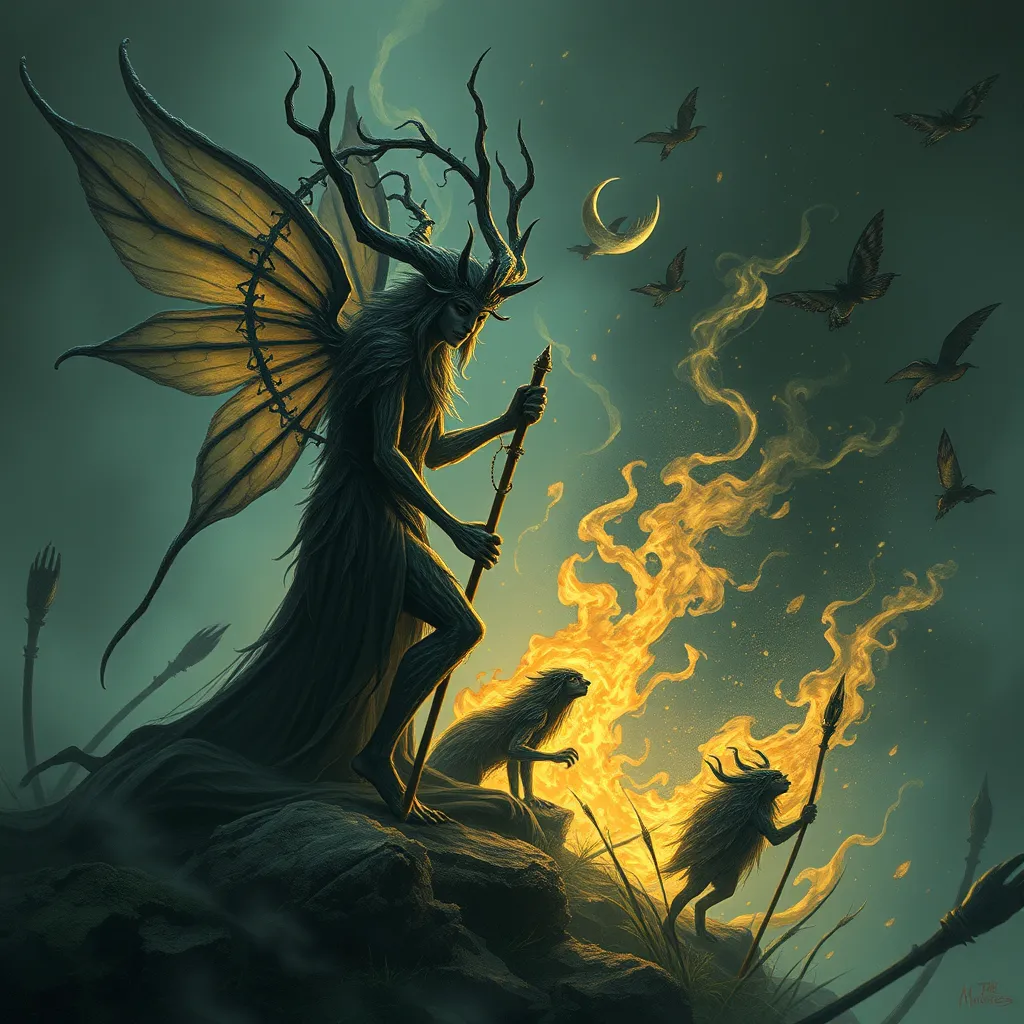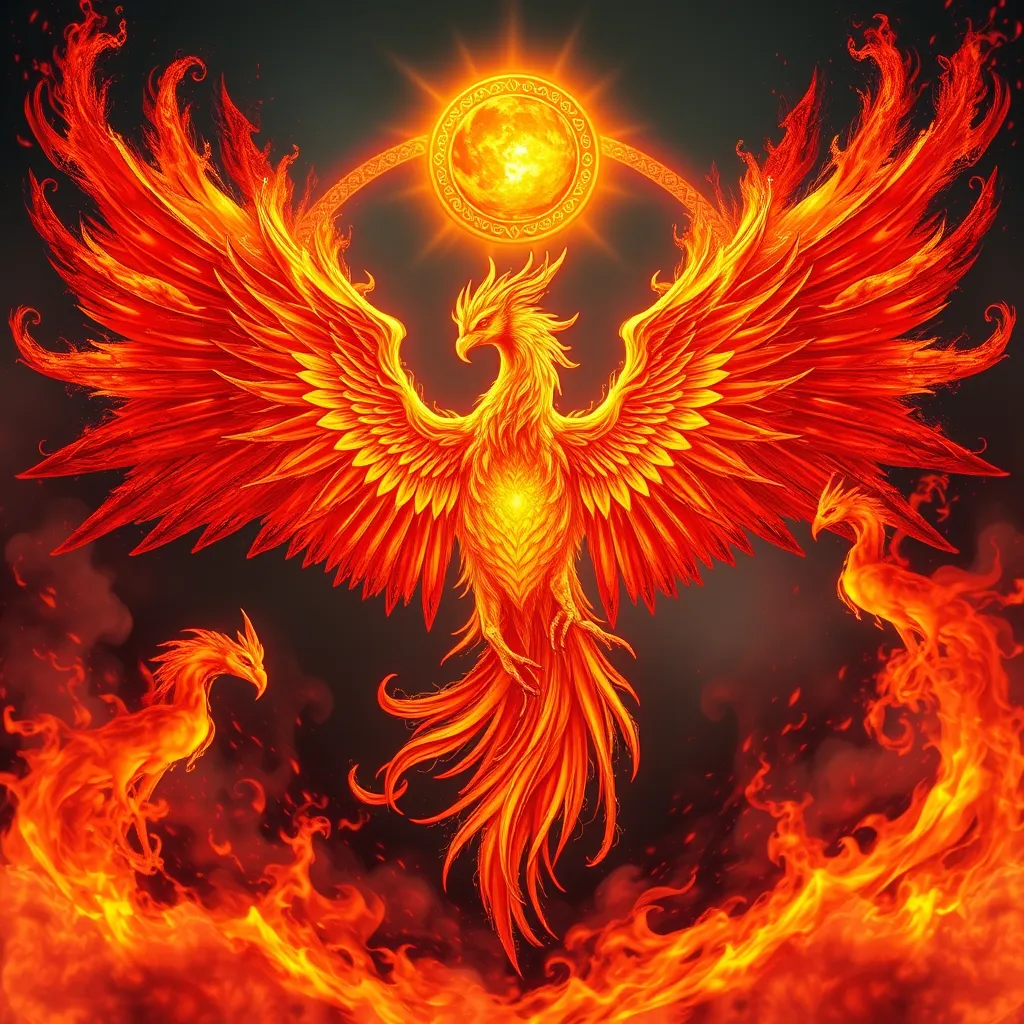The Lore of the Huldrafolk: Unraveling the Myths and Legends of the Scandinavian Fairies
I. Introduction to Huldrafolk
The Huldrafolk, often referred to simply as Huldra, are mythical creatures rooted deep in Scandinavian folklore. Known for their enchanting beauty and supernatural qualities, these beings have captivated the imaginations of many across generations.
Historically, Huldrafolk were believed to inhabit the dense forests and secluded mountains of Scandinavia, particularly in Norway, Sweden, and Finland. They are often depicted as beautiful women with long hair and a cow’s tail, symbolizing their connection to nature.
The purpose of this article is to explore the myths and legends surrounding Huldrafolk, examining their origins, physical characteristics, roles in folklore, and their relevance in contemporary culture.
II. Origins of the Huldrafolk
A. Etymology and Linguistic Roots
The term “Huldra” is derived from the Old Norse word “hulda,” meaning “hidden” or “secret.” This etymology reflects their elusive nature, as these beings are often associated with the mysterious and the unseen.
B. Traditional Beliefs and Cultural Significance
In traditional Scandinavian beliefs, Huldrafolk were seen as a blend of human and supernatural elements. They were often regarded as protectors of the forests and were invoked in various rituals to ensure a good harvest or safe travels.
C. Geographic Distribution in Scandinavian Countries
- Norway: Huldrafolk are particularly prominent in Norwegian folklore, where they are often depicted as benevolent beings who assist lost travelers.
- Sweden: In Swedish tales, Huldrafolk are often portrayed with a more mischievous nature, sometimes luring men into the woods.
- Finland: Finnish folklore presents Huldrafolk as spirits of the forest, closely linked to the land and its wildlife.
III. Physical Characteristics and Traits
A. Description of Huldrafolk Appearance
Huldrafolk are typically described as stunningly beautiful women with long, flowing hair that resembles the colors of the forest. A defining feature is their cow’s tail, which is often hidden under their skirts. This tail symbolizes their connection to nature and the animal world.
B. Variations Across Different Regions
While the core characteristics remain consistent, variations do exist:
- In some regions, Huldrafolk are depicted with more animalistic features, such as pointed ears or animal-like eyes.
- In other tales, they may appear as ethereal beings, almost glowing, embodying the magic of the forest.
C. The Symbolism of Their Features
Their beauty and the presence of the cow’s tail symbolize fertility, the duality of nature, and the fine line between civilization and the wild. Huldrafolk represent both the allure and danger of the natural world.
IV. Huldrafolk in Folklore and Oral Traditions
A. Common Tales and Stories Involving Huldrafolk
Folklore is rich with tales of Huldrafolk, often emphasizing their interactions with humans. Common stories include:
- The tale of a lost traveler who encounters a Huldra, leading to either a blissful union or a perilous fate.
- Legends of Huldrafolk protecting their forests from those who seek to exploit natural resources.
B. The Role of Huldrafolk in Scandinavian Mythology
In Scandinavian mythology, Huldrafolk are often portrayed as guardians of nature. Their presence in stories serves as a reminder of the importance of respecting the environment and the consequences of disregarding nature’s laws.
C. Impact on Local Culture and Identity
The tales of Huldrafolk have left a lasting imprint on the cultural identity of Scandinavian societies. Festivals and traditions often celebrate these mythical beings, reinforcing the connection between the people and their natural surroundings.
V. Huldrafolk and Nature
A. Connection to the Natural World
Huldrafolk are intricately linked to the natural world. They embody the spirit of the forests, mountains, and rivers. Their stories often reflect themes of harmony with nature and the balance between humanity and the wilderness.
B. Huldrafolk as Guardians of Forests and Animals
Many tales depict Huldrafolk as protectors of wildlife, ensuring that animals are treated with respect and kindness. They are seen as intermediaries between humans and the spirit of the earth.
C. Environmental Symbolism in Huldrafolk Lore
The lore surrounding Huldrafolk carries strong environmental messages, emphasizing the need to protect nature from exploitation. Their stories often serve as cautionary tales about the consequences of harming the environment.
VI. Relationships with Humans
A. Encounters Between Huldrafolk and Humans
Encounters with Huldrafolk are a common theme in folklore, often characterized by a mix of wonder and danger. These beings can be both alluring and treacherous, leading to various outcomes for humans.
B. Themes of Love, Betrayal, and Caution in Their Interactions
Many tales explore complex relationships between Huldrafolk and humans, often involving themes such as:
- Love: Romantic encounters that lead to both joy and sorrow.
- Betrayal: Instances where trust is broken, leading to dire consequences.
- Caution: Warnings about the dangers of being seduced by the beauty of the Huldrafolk.
C. The Dual Nature of Huldrafolk: Benevolent and Malevolent
The duality of Huldrafolk is a significant aspect of their lore. While they can be benevolent and helpful, they can also be vengeful if wronged. This complexity adds depth to their character in folklore and reflects the unpredictable nature of the wild.
VII. Modern Interpretations and Cultural Impact
A. Huldrafolk in Contemporary Literature and Media
In recent years, Huldrafolk have resurfaced in contemporary literature, films, and art, often representing themes of femininity, power, and the connection to nature. They are portrayed as strong, independent beings with a mystical allure.
B. The Revival of Interest in Nordic Folklore
The growing interest in Nordic folklore has led to a renaissance of stories about Huldrafolk. This revival reflects a broader cultural movement towards exploring and preserving traditional myths and legends.
C. Huldrafolk as Symbols of Feminine Power and Mystique
As symbols of feminine power, Huldrafolk embody the strength and mystery of women in nature. Their stories challenge traditional gender roles and celebrate the complexity of feminine identity.
VIII. Conclusion
A. Summary of Key Points
The Huldrafolk are a fascinating aspect of Scandinavian folklore, representing the interplay between humanity and nature. Their enchanting stories remind us of the beauty and danger inherent in the natural world.
B. The Enduring Legacy of Huldrafolk in Scandinavian Culture
The legacy of Huldrafolk continues to influence Scandinavian culture, inspiring art, literature, and environmental consciousness. Their tales serve as a bridge between the past and present, connecting generations through shared narratives.
C. Invitation for Further Exploration of Folklore and Mythology
For those intrigued by the mystical world of Huldrafolk, further exploration of Scandinavian folklore offers a rich tapestry of stories and insights into the cultural psyche of the region. Delving deeper into these myths can unveil the timeless lessons they convey about nature, humanity, and the intricate dance between them.



